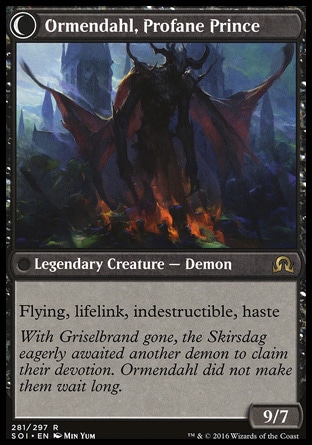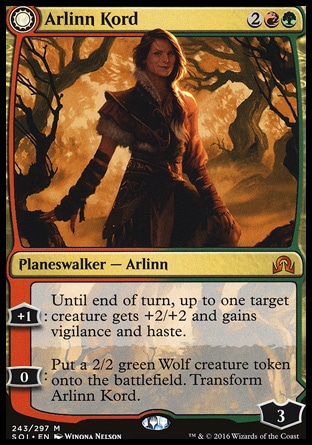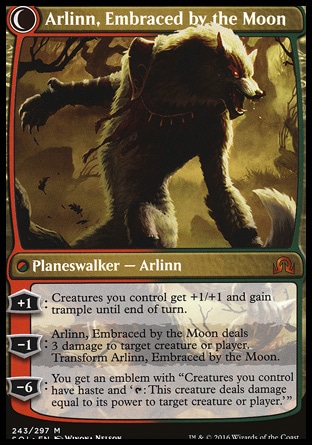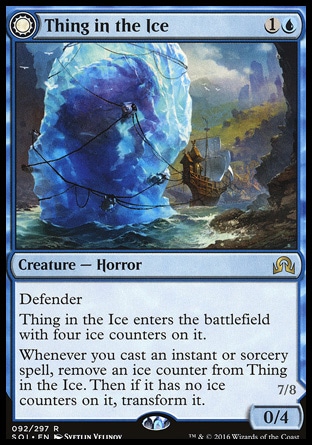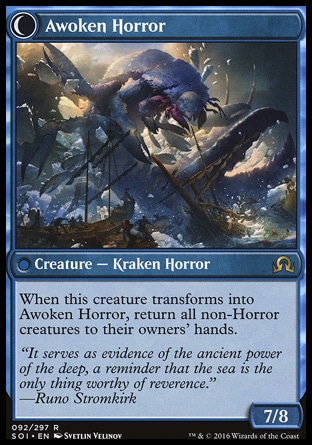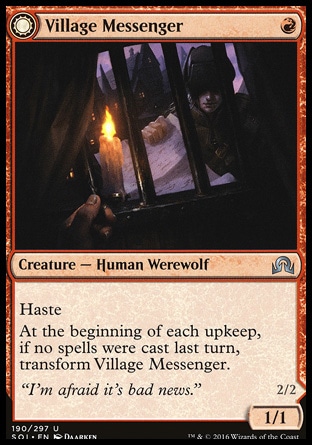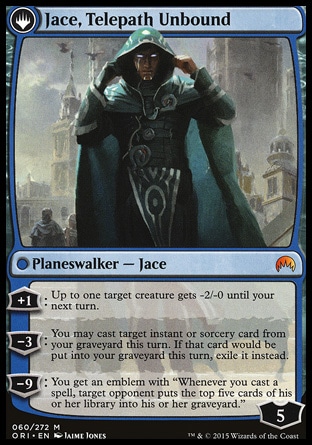Shadows Over Innistrad Set Review


Spoiler season is a polarising time because Magic players generally come in two varieties. The first group are wide-eyed idealists convinced that everything is amazing. They’re the ones who run around the room every time a card is spoiled because they think it will make Minotaur tribal viable in Modern or that they can explain why it’s good in EDH without anyone’s eyes glazing over. These people always expect the best but they’re never disappointed because when something bad happens, their goldfish brains forget that they expected anything else.
The second group are pessimists who complain that everything is terrible. If Wotc print a weak set, these are the people whinging that packs aren’t worth their money and they’re quitting the game. If Wotc print a strong set, they’re up in arms that their favourite format is broken and they’re quitting the game. These people always expect the worst but they’re often disappointed anyway because the universe is more creative than they are.
Spoiler season consists of the idealists telling everyone how excited they are, and the pessimists explaining why they’re wrong. I personally identify with the latter camp, except that I’m so pessimistic that I worry about the future of pessimism.
Technically there’s a third group of sane people with nuanced opinions. They became irrelevant when the internet was invented, or they went extinct. Their absence leaves the rest of us free to shout at each other on the internet, so let’s get angry about some new cards, shall we?
A new large set along with the rotation of two influential sets makes for an unpredictable environment for the new cards, so I won’t risk embarrassment with a straightforward Top Ten Cards list. There’s also a brand new rotation structure reshaping the life-cycle of cards in Standard, so I’ll play it safe with a broader look at the most promising cards in the set.
The lands
I won’t get into a vague debate about how “good” the new rare land cycle is. Everyone will be playing them in Standard and no-one will be playing them in Modern and there isn’t much more to say about that.
It goes without saying, however, that it is worthwhile to start thinking about what mana-bases are possible in Standard. I would have liked to take a look at the maths of mana in the new Standard but Frank Karsten already did that over on Channelfireball.com. He concluded that two-colour mana-bases are quite easy and have a little bit of room for colourless utility lands, while three-colour mana-bases are possible but with drawbacks in the form of of tapped land drops. In the absence of Rhino-like incentives to play three colours, two-colour decks look likely to be the norm, with a note that it’s also possible to get away with colourless cards such as Thought-Knot Seer and Reality Smasher in enemy-colour pair decks if you put your mind to it.
On the topic of colourless mana, Shadows Over Innistrad also features a pair of intriguing colourless utility lands in Westvale Abbey and Drownyard Temple.
The flashiest aspect of Westvale Abbey is flipping over into a 9/7 flying, haste, lifelink indestructible demon. Impressive, certainly, but not likely to come up all that often. On those occasions that you have five spare creatures lying around you can generally manage to come up with a way to close out the game. The other ability is probably the main use of this card. It’s somewhat reminiscent of Moorland Haunt in that it can be used to close out a game that’s in top-deck mode. The problem is that it’s not the most reliable source of inevitability because of the life cost involved. I would very much like for Westvale Abbey to be good. 9/7 demons with double-digit word counts are not to be sneezed at. However, I have to wonder if Foundry of the Consuls might be a better option for this role.
Drownyard Temple offers card advantage and mana ramping rolled into one if you can get it into your graveyard and it even curves nicely with a turn two Jace. Discarding it to Magmatic Insight or Tormenting Voice also works. I have a weakness for durdling so I’ll be trying a copy or two of this in Madness decks. It probably won’t work out.
The planeswalkers
The flagship cards of Magic in terms of story and gameplay alike, planeswalkers merit detailed discussion, particularly since most of them end up seeing some amount of play in Standard. Shadows Over Innistrad features four planeswalkers, all of them unusual enough to be tricky to evaluate.
My first response Nahiri, the Harbinger was that she’s a bit too clunky. Her +2 ability is marginal on its own and requires graveyard synergies or a heavy Madness subtheme to generate real value. Her -2 is certainly powerful but it’s also awkward. When your opponent has just played a big creature that is yet to attack you run the risk of playing Nahiri and watching her get killed without getting real value. That drawback is far from fatal, though. If you’re behind on the board and under pressure, Nahiri will generally have targets. When you’re in front, she can be expected to defend herself adequately and generate enough incremental value to close out a game.
This is a card that will rarely seem overwhelmingly powerful but will do enough to win a lot of close games. Nahiri merits consideration in most Standard decks that are running the right colours. Just be aware that it is never worth building around a planeswalker’s ultimate, so I don’t want to see deck-lists running a singleton Ulamog ‘just in case.’
Sorin, Grim Nemesis looks certain to play a major role as a finisher in Standard. It’s a card capable of catching up on the board when you’re behind as well as closing the game rapidly once you’re turned the corner. The –X ability is the real selling point here; it’s capable of taking care of a big threat and a life-total deficit at the same time while leaving behind a card advantage engine and clock rolled into one, exactly what you need when you’re behind.
If you’re ahead already, then Sorin is going to roll over your opponent and there won’t be a lot they can do about it. There is the ever-present caveat that six mana is a lot, so don’t play Sorin without the means to prolong games to that stage. Otherwise, go right ahead and expect him to salvage games your opponents thought were in the bag.
Arlinn Kord is a troublesome card to evaluate but there is an obvious starting point. She is strictly weaker than she would be if she always had access to all 5 abilities. A ‘walker with that set of 5 abilities would be very good, certainly, but not spectacular. So that immediately puts Arlinn Kord at somewhere below “very good but not spectacular.”
The question is how far below. I am inclined to say quite far below, because the abilities you have access to aren’t the ones you want at the time. The first thing you’d like to do after tapping out for a planeswalker is activate the Lightning Bolt ability to eliminate a threat. That’s on the wrong side of the card, so you have to wait at least a turn. The second turn that she’s on the board, what you would ideally like to be doing is activating the +1 on the front side so that you can give haste to your follow-up threat. But the only way she can protect herself the first turn she’s out is to make a 2/2, which flips her and leaves that ability is on the wrong side of the card.
So the base case for Arlinn Kord is to make a 2/2 the turn you cast her and hope she lives so that you can bolt something and flip her back to send in a big hasty threat the following turn.
This is a perfectly reasonable way to spend 4 mana, but it’s hardly a big draw toward playing Red/Green decks in Standard. If a deck exists that is strong for other reasons and which happens to have a spot for her, Arlinn Kord is a reasonable card to play. However, she’s not likely to be the best choice in many decks. I expect her to lurk on the fringes of Standard play.
Another set, another Jace. This particular iteration, Jace, Unraveler of Secrets, is remarkably similar to the infamous Mind Sculptor except that it costs five mana instead of four. It is probably still pretty good in Standard, where I expect it will see some amount of play. It’s more interesting to speculate about how long it will take before WOTC finally slip up and put two different Jaces in the same set by accident.
The Modern prospects
Modern has an enormous card pool, so most sets contribute a bare handful of cards to its pantheon of playable cards, so this will be a short list. The equivalent list for Legacy is shorter still (zero entries) because it has become astonishingly rare for new cards to make an impact there. As for Vintage, I gave up on trying to predict that format when I found out that people play Slash Panther. So we’ll just look at Modern and Standard for the time being.
The Thing in The Ice comes with a truly awful acronym but I won’t count it out just for that. Paying two mana and ending up with a 7/8 borders on absurd. Bouncing the rest of the board at the same time pushes it over the edge. There isn’t an obvious home for this in any established Modern deck, but its power level is suitable for the format and there are enough cheap or free cantrips to reliably flip it. Standard is decidedly light on cheap cantrips so I don’t anticipate this being much good there.
Asylum Visitor has to be a contender for the best card with Madness ever printed. It’s a reasonable card at face value, since three power is a decent clock for two mana and it’s not unreasonable to expect to draw the occasional card in the late-game even if you don’t build your deck around the ability. People got excited for Blood Scrivener and that didn’t work out, but the extra power along with the trigger in your opponent’s upkeep are already enough to give this the bump it needs. If you can get extra value by playing it for its Madness cost then it really shines. It’s also a Vampire, which could be relevant.
What it is not, however, is a straight replacement for Dark Confidant. Asylum Visitor asks you to do a bit of extra work and will rarely draw any additional cards before your fourth or fifth turn, whereas Bob gets to work right away without any hoops for you to jump through. Asylum Visitor does hit a bit harder and loses you a bit less life but those factors have nothing to do with the reasons you want to play Bob on turn two. Even Asylum Visitor’s synergies with Liliana of the Veil don’t put it over the top of Bob’s consistency. It’s worth testing a few copies alongside Bob in a Jund deck, but don’t expect to play this as a cut-price alternative and get the same results. If Madness is a keyword you’re interested in, however, try out Asylum Visitor.
In Standard, it’s just an excellent card that you’ll want in most black decks.
Cryptolith Rite is not a powerful card per se. It relies on you having a bunch of creatures out in order to do anything. It’s also fiddly to build around. If you’re playing a deck where you want your creatures to make mana, you’re probably playing creatures that make mana, in which case you don’t care about Cryptolith Rite. This doesn’t go into any existing decks and it will be tricky to get to work, so the balance of probability is that it will never see the inside of a sleeve. I mention it here because it does something unusual and with a high potential power level. It won’t take many Eldrazi Spawn to power out something enormous if you have this on the board and it also works nicely with Wall of Roots. It might also work out in Standard as a way to power out Kozilek or Ulamog.
Eerie Interlude is a slight upgrade to Ghostway in that it lets you keep tokens around, which is particularly good with Blade Splicer. Ghostway has seen some play in Modern, so Eerie Interlude might also see some play in Modern. Then again, the Ghostway decks turned out to be better without Ghostway so this could be a non-starter. For Standard, the printing of some solid value creatures with etb effects could make this viable at some point in its life-cycle.
The Standard standouts
The new rotation schedule means that Standard will be, on average, a slightly smaller format than it used to be. That may well create more space for individual cards to shine so our assessment of cards can perhaps be a bit more generous than in the past. Then again, cards won’t stay in the format for as long so they’ll have fewer opportunities for play. Perhaps it all balances out more or less.
Olivia, Mobilized for War is a solid card. Three mana for a 3/3 flyer is the kind of rate that can reasonably fill a slot on your curve without embarrassment and it’s conveniently sized for handling Drana, Liberator of Malakir, the other three mana flyer that can be expected to crop up in the early stages of the new format.
It will take a bit of work to extract full value from her triggered ability but giving a big threat +1+1 and haste for no extra mana commitment is an enormous tempo boost. That effect will often be worth a card on its own. Any shenanigans with Madness or graveyard interactions are just gravy on an ability that will always pose a threat in the mid- to late-game. Just remember to sandbag a couple of lands for it. Oh, and the “it becomes a vampire” clause could also be useful for something, I guess.
Altered Ego does what previous Clone effects failed to do, which is give you the biggest threat on the board, provided you can sink some extra mana into it. Being uncounterable is a nice upside, making this card a particular headache for decks playing hexproof finishers such as Dragonlord Ojutai. Clone effects at four mana and up don’t often make much of an impact in Standard but this one could certainly have its uses, provided there’s a viable Green/Blue deck in the format.
Anguished Unmaking isn’t quite the second coming of Vindicate. The option of blowing up a land put Vindicate on a whole different power level, and the additional cost of 3 life is far from trivial. However, unconditional removal at instant speed is at a premium these days, and Hero’s Downfall got us used to the idea of paying three mana for it. Hitting any non-land permanent gives this incredible flexibility, and exiling lets it take care of problematic threats while also enabling Eldrazi Processors. I expect this card to be a defining feature of Standard as long as it’s legal, with the caveat that it could be forced into sideboards if there are enough aggressive red decks running around. I’m not lining up to test this in Modern though; three mana is a high price for removal and three life is a big additional cost with opponents throwing Lava Spikes around.
Archangel Avacyn looks a bit pricey as a 4/4 flyer for five mana, but Vigilance and Flash are both high-value abilities. Then there’s that bit of text that makes all your creatures indestructible. Five open mana will force your opponents to think “But maybe all my stuff will die” when they’re doing combat maths. “But maybe this will only kill my creatures” will also go through their heads before they cast any sweeper that isn’t Languish. Spending 5 mana for a beater that dies to removal isn’t always a great prospect but it’s not a stretch to imagine Avacyn generating a card’s worth of value on casting. So we’re talking about a reasonably efficient rate coupled with the ability to occasionally break open a game, and that’s before we even look at the other side of the card.
The triggered effect of transforming is a bit of a double-edged sword. If you have a large board, your opponent will sometimes be able to kill one creature and get the rest for free. Still, it will cost 3 life and leave them facing a 6/5 flyer so even the worst case doesn’t look too bad. I wouldn’t really bother to build a deck around using the ability; it’s not enough of a payoff to compromise on other aspects of deckbuilding. Used opportunistically, however, it will steal an occasional game. It will also force opponents to play around it to some extent, which can make it easier to stay in front on the board.
Falkenrath Gorger and Village Messenger aren’t the best red one-drops ever printed, but they’re serviceable, and aggro decks need their one-drops. Expect to see quite a few of these in the early weeks of the new format.
Honorable mention goes to Jace, Vryn’s Prodigy. It isn’t actually in this set, but it’s the reason we have to take a hard look at pretty much every card with Madness that is remotely playable on its own merit. Discarding a Madness card and playing it turns his loot ability into “tap, draw a card, maybe get a mana discount, maybe give a creature flash and maybe flip over a planeswalker.”
With a critical mass of Madness cards in your deck, Jace’s power level suddenly goes far beyond what’s normal in Standard. Remembering that this is a card that has already been dominating Standard I can’t help but have visions of Jace mirrors that are decided on the spot by discarding a Fiery Temper. I’d be lying if I claimed to have no concerns about a format where letting an opponent untap with a two-drop could be tantamount to concession, especially when that same format happens to be a bit short on cheap removal.
The format might not shake out in that way but the power level of Jace nevertheless forces us to CTRL F for the word Madness in the spoilers as well as keeping an eye out for cards that offer some redundancy for Jace as Madness enablers that generate value.
Call the Bloodline is one of the latter. Getting a 1/1 with lifelink isn’t normally worth a card, but with Madness involved this could be a real engine. Note that you can also activate it in your opponent’s turn, so it can actually get rid of cards faster than Jace, though the ability costing one mana is something of a limitation.
As for the Madness cards themselves, Fiery Temper is far from the only prospect. I already mentioned Asylum Visitor as being worth testing in Modern so it almost goes without saying that it’s good enough for Standard. In a dedicated Madness deck it seems like a logical inclusion. That said, Standard lacks the cheap hand disruption that so easily empties hands in Modern. It also demands higher land counts which will often be frustrating unless you can find a way to get rid of more than one of them per turn.
If the format does turn out to revolve around Jace, then two-mana removal that takes care of him on time will be at a premium, particularly if it scales well into the late-game. Avacyn’s Judgment fits the bill provided you can reliably get some work out of the Madness clause. If you can’t, then it’s just a worse Twin Bolt, so it’s viability in Standard is totally dependent on there being a reasonable shell that can make good use of it.
From Under the Floorboards provides a bunch of value along with some incidental life-gain, so it’s certainly got some utility. The base rate of six power and toughness across three bodies is quite reasonable for five mana, so the prospect of getting extra value and/or a larger effect through the Madness cost is quite tempting. I expect this to be quite playable even if Madness is just a fringe benefit.
Whether or not Welcome to the Fold turns out to be good will depend heavily on what two-drops turn out to be popular in the new format. It’s a fine card both with and against Jace, but it will be a bit of a struggle to make it work against something like Sylvan Advocate.
There are a handful of other Madness cards worth a look, but I don’t think any of them are playable at face value, nor are their Madness costs efficient enough to get me interested in playing sub-optimal discard outlets just to work them into a deck.
Wrap-up
Doubtless there are plenty of powerful cards I’ve overlooked, but there are some notable omissions that were more intentional. Every set has cards that look great but really aren’t. Identifying them early on is important for Magic players hoping to pay rent on time, so I’ll make note of some cards I think might be highly overrated. If you think I’m wrong, let me know in the comments and maybe pre-order them from Top Deck.
Goldknight Castigator is a pretty polarizing card. Its power level is immense, so plenty of players are excited about it. In terms of combat it is practically equivalent to a 4/5 flyer with haste for four mana, a set of stats that would totally dominate Standard. The problem is that you take double damage as well and that’s kind of a big deal. I’m just not a fan of playing cards that are in the habit of letting my opponent just suddenly win out nowhere. It’s worth testing, but don’t take out a second mortgage to buy these out.
Arlinn Kord is just that little bit too awkward to be consistent, so I would look for more reliable options in the four-drop slot.
Harness the Storm has generated an amount of excitement that is frankly mystifying to me. It’s kind of a useless card. You invest three mana in it and you never really get tempo back out of it. All you can hope for is to eventually get extra cards out of it, provided you jump through some hoops and your opponent never messes with your graveyard. This isn’t Pyromancer Ascension, which effectively gets you extra mana along with card advantage whenever it triggers. This costs more and does less. It’s also terrible in multiples. Save yourself the hassle. If all you’re getting is eventual card advantage, take a shortcut and cast Painful Truths.
You may also notice that I haven’t been impressed with any cards featuring Investigate. That was completely by accident; there’s nothing inherently weak about the mechanic. However, it is a little bit slow, so WOTC being a bit conservative with their design has resulted in the Investigate cards mostly seeming a bit too low-impact. I’ve also omitted any and all cards with Delirium but that was entirely intentional. The reason for this is that I’ve seen a lot of Tarmogoyfs stuck at 3/4 in Modern. And Tarmogoyf gets to look in your opponent’s graveyard, while Delirium only cares about your own. Four different card types is a hefty hurdle. My feeling is that if a card needs Delirium to be good, then that card isn’t good.
Overall, I’m quite impressed with the set. It isn’t going to reshape Modern the way some recent sets have done; nor is it going to be an oppressive presence in Standard the way Khans of Tarkir was. Instead, it’s at a reasonable power level and offers its fair share of interesting cards without anything that looks set to be oppressive.








